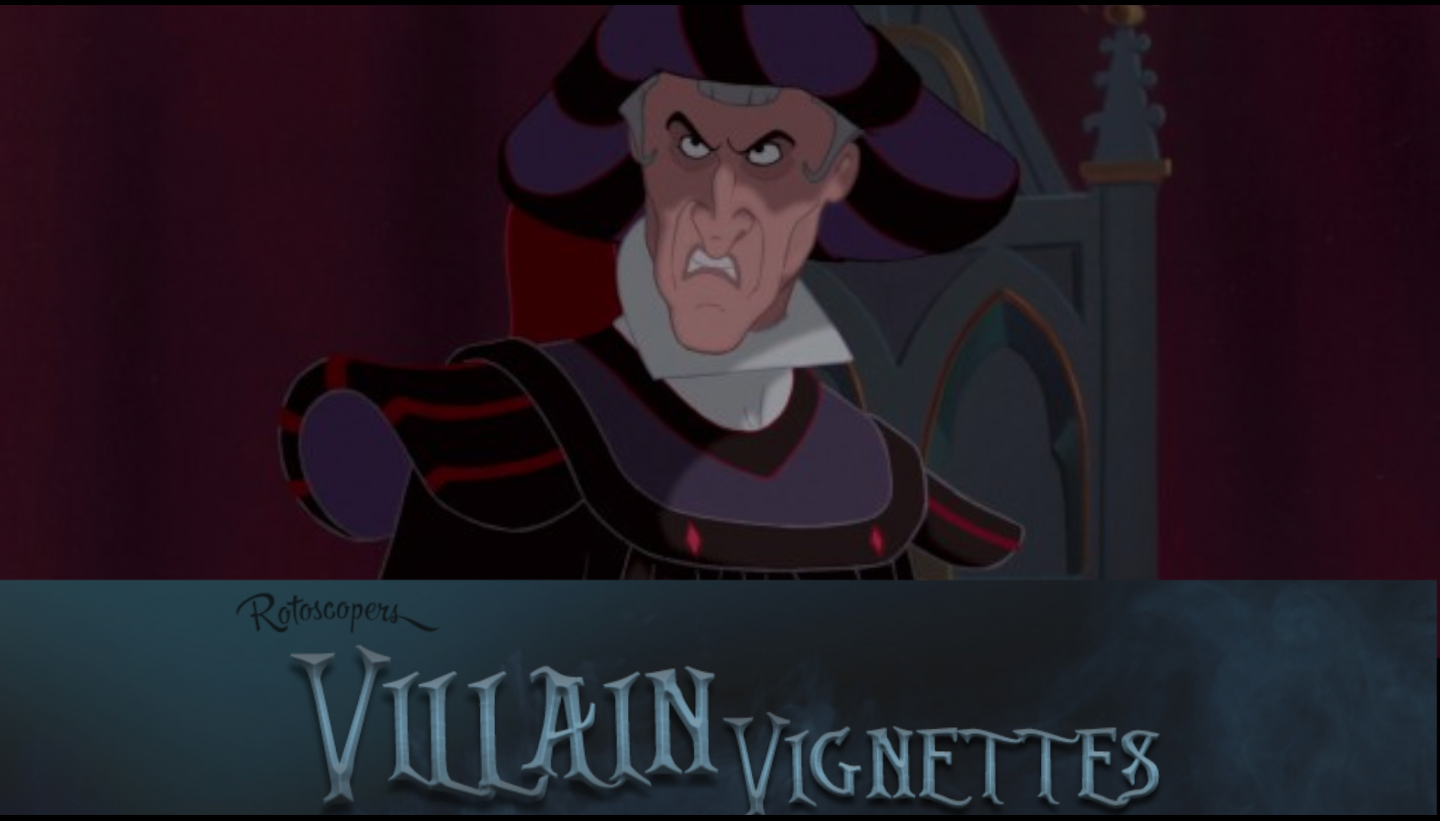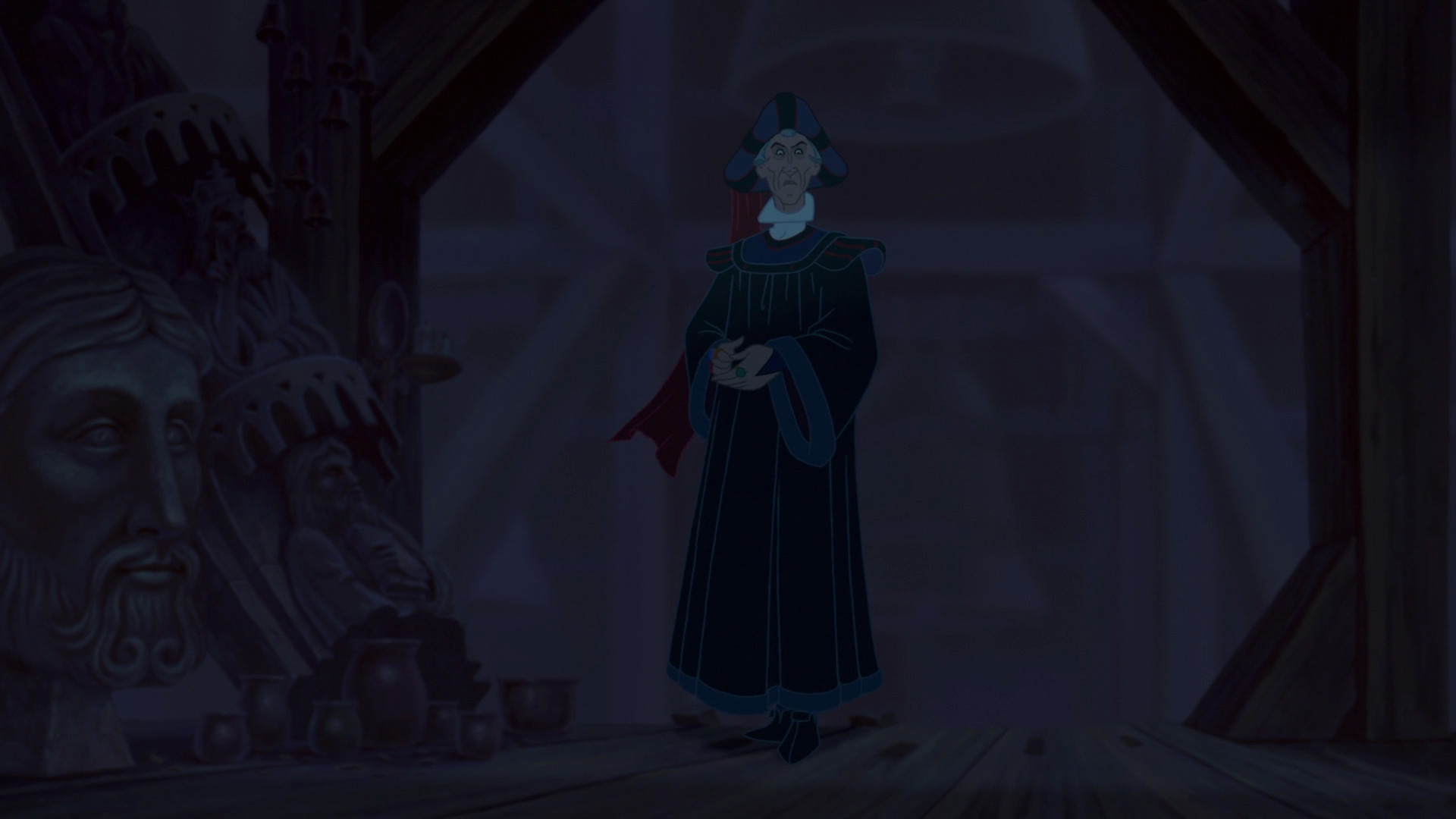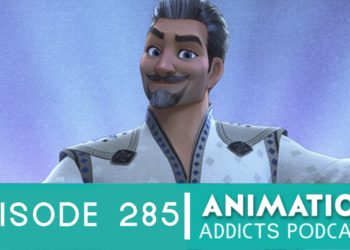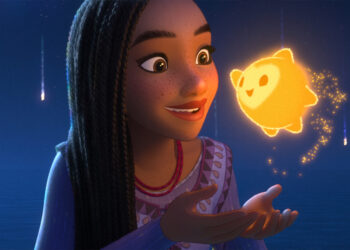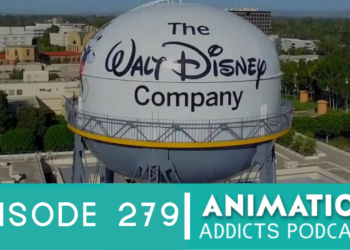“The time has come, gypsy. You stand upon the brink of the abyss. Yet even now, it is not too late… I can save you from the flames of this world and the next. Choose me, or the fire!”
Disney’s The Hunchback of Notre Dame (1996) is way up there on the list of darkest Disney Animated Features. So it’s only appropriate that the film’s main antagonist, Judge Claude Frollo, is widely considered to be one of Disney’s darkest villains. While there are Disney baddies (Ursula, Izma, Scar) that we love to hate, Frollo has zero redeeming qualities, and met with one of the most horrific ends in all of the Disney canon. He’s a murderer and a creep hiding behind a false guise of piety. In recent years he’s had a little face time in the Disney parks and in auxiliary series such as Kingdom Hearts, but in general he’s stayed in the shadows of the darkest corners of the Disney universe.
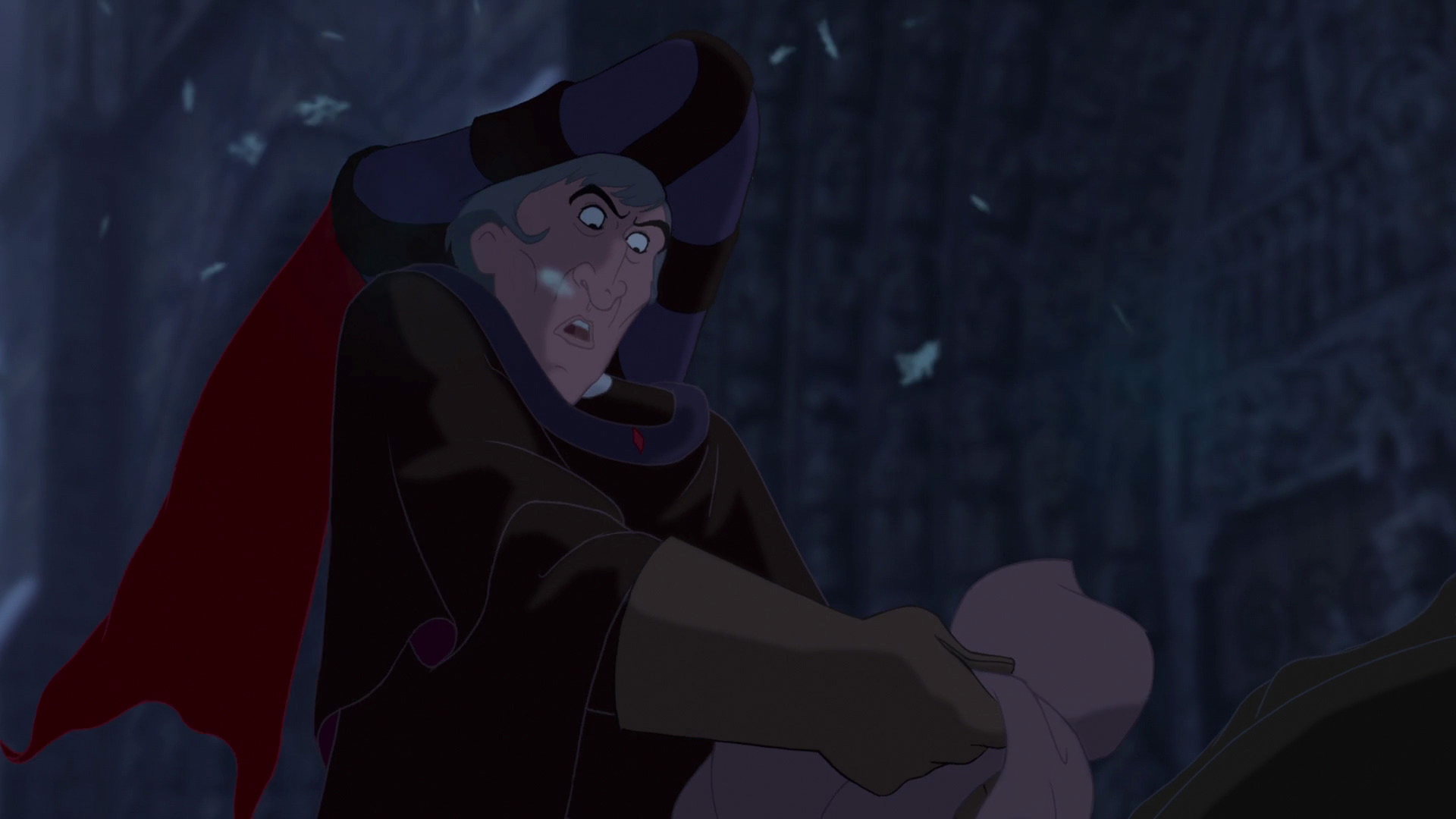

“Remember Quasimodo, this is your sanctuary.”
Frollo’s lengthy resumé of crime begins in the prologue of The Hunchback of Notre Dame, where he is seen running down helpless gypsies on horseback. Targeting a mother holding her newborn, he mercilessly overpowers her and shoves her down the steps of the Notre Dame cathedral, killing her in the process. Maybe he didn’t notice she was dead, maybe he didn’t care, or maybe he had hopes to raise the baby outside of gypsy culture, but he pauses to take a look at the infant hunchback and instantly recoils in shock.
You can’t really blame him for his reaction. I mean, throughout the film there are plenty of characters, good and otherwise, who react to Quasimodo’s appearance with the same shock. But I’m not sure the others would do what Frollo does next. After making sure there are no witnesses, he attempts a very, very late-term abortion by drowning the unwanted baby in a well, declaring that such a depraved creature should be sent back to Hell where he came from. Which is disgusting in itself, but also because that’s a source of potable water. Try explaining all that to your kids after leaving the theater.
Frollo is stopped in the nick of time by the Archdeacon of the cathedral, and spares Quasimodo after a haunting confrontation with “the eyes of Notre Dame”. Maybe it was the thought of murdering an innocent child in the shadow of a house of God, or his rigid (yet fragile) sense of duty to the Church, but Frollo nonetheless accepts his responsibility of tending to the life of Quasimodo. This may be Frollo’s only moment of redemption in the film, were it not for his immediate comment that the hunchback may someday be of use to him. His evil grin indicates that he doesn’t have good intentions at all.
When we meet Quasimodo twenty years later, Frollo exhibits a very thin parental regard for his foster son. It’s painful to watch Frollo attempt to instill his rigid dogma upon Quasimodo, having him recite his own harsh version of the alphabet (A is for abomination, B is for blasphemy, C is for Contrition…). Even more painful is the short duet between the two, where Frollo reaffirms his adopted son’s deformed physique in the most insensitive manner. He seems to have learned his parenting skills from Cinderella’s stepmother.
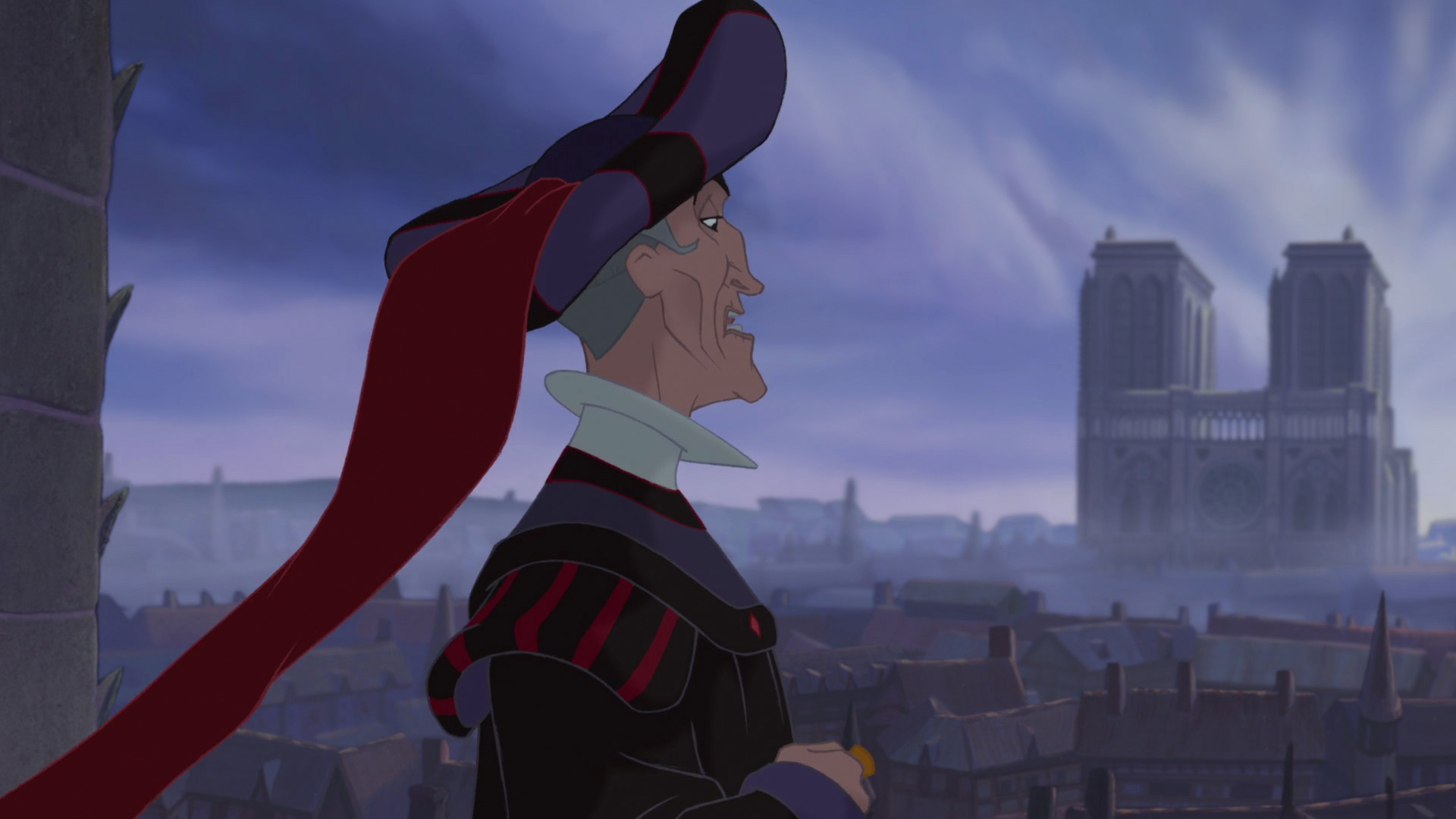
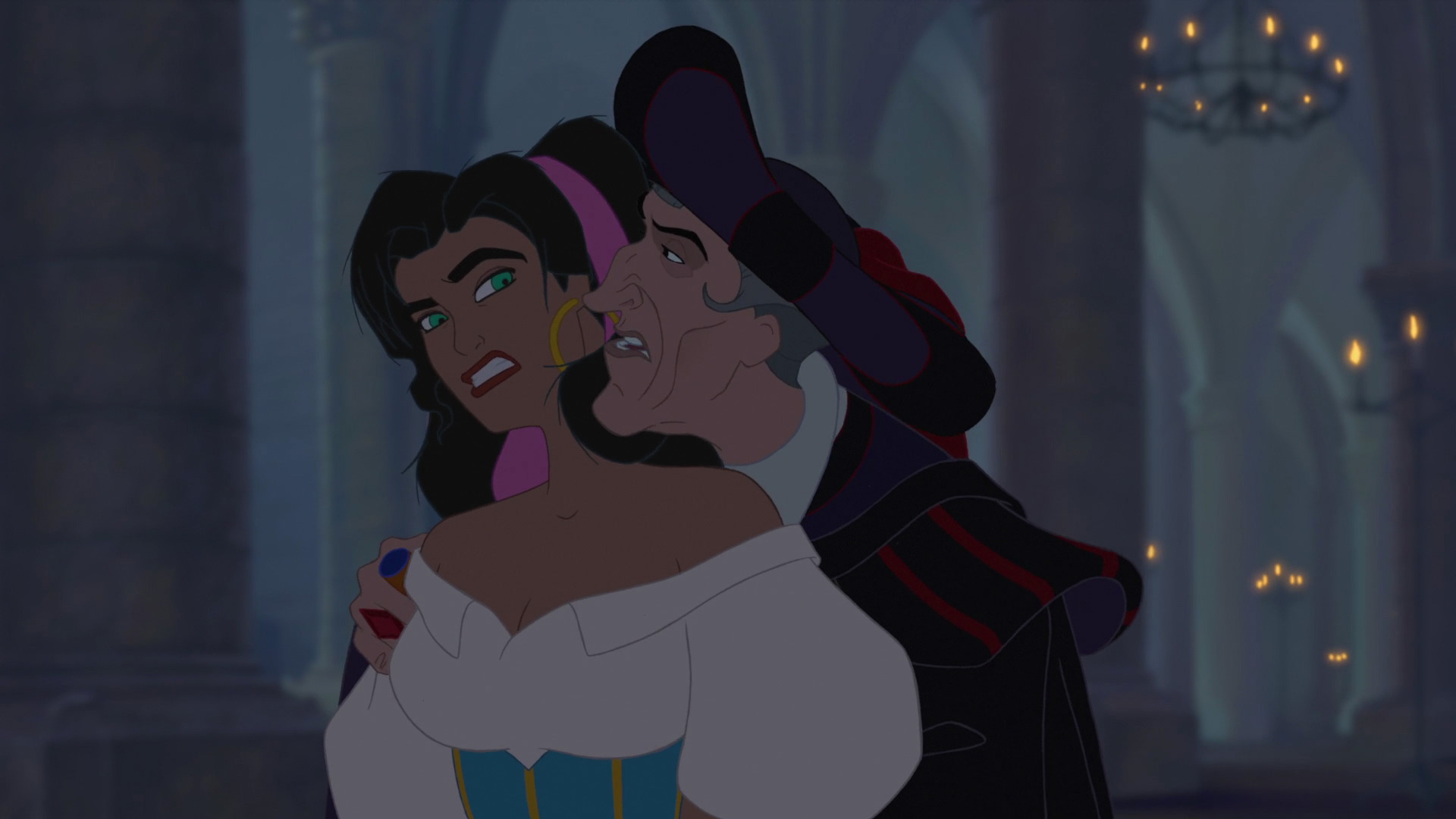
“I am a virtuous man. Good and evil shall be made plain.”
Perhaps Claude Frollo’s greatest sin is that of hypocrisy. Which is funny, because Frollo continuously justifies his heinous acts throughout the film. He uses his authority as an enforcer of the law to persecute the gypsies, who he claims will spread their apparent affinity of sorcery and hedonism to the citizens of Paris. His rule over Paris parallels his treatment of Quasimodo: he denies them joie de vivre in the name of protection and stability.
While he claims devotion to the Church, he seems most focused on the harsher religious elements of ****ation, punishment, and judgement (makes sense that he’s a judge). He is almost always shown in the shadows during the film. Indeed, he denies the proverbial “light” of Christian belief (faith, hope, and love). It is important to note that, while Frollo’s counterpart in the original novel was a clergyman, in the film he does not simply represent the hypocrisy of any church. Rather, he represents what happens when people use spiritual piety and devotion to justify their own evil deeds. After all, the Archdeacon repeatedly expresses his disgust with Frollo’s actions.
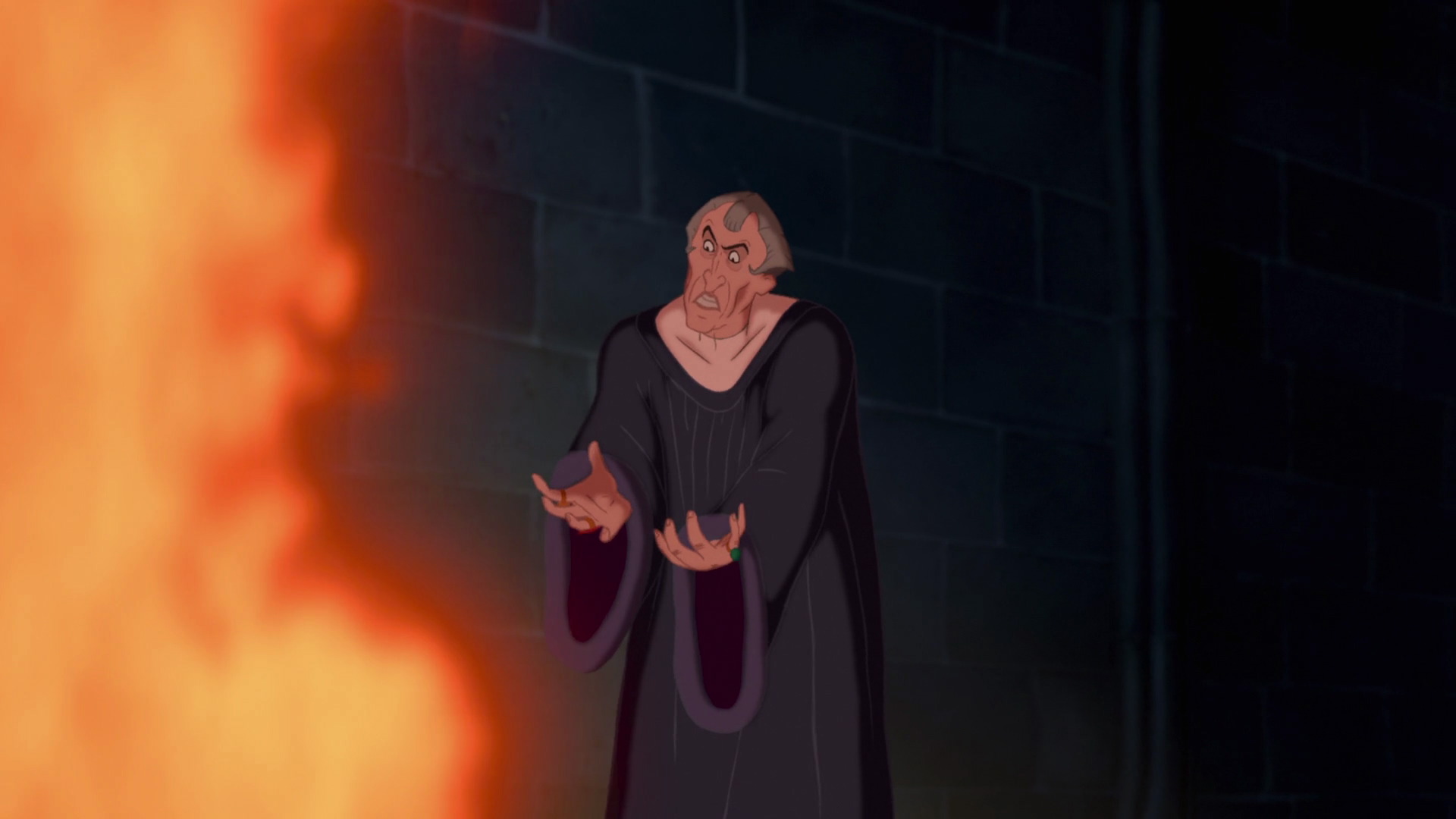
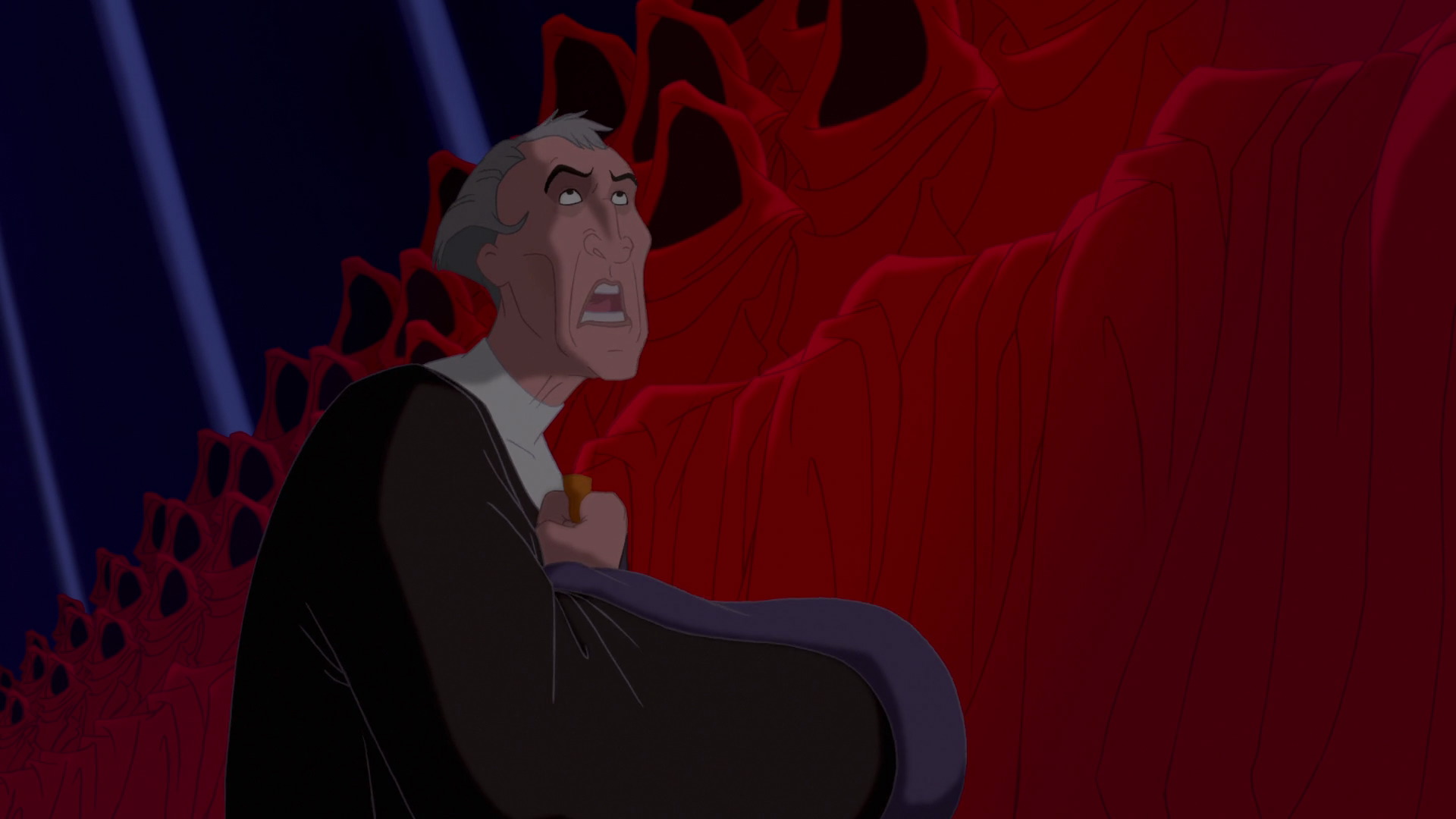
Frollo does express a fair amount of guilt, but only regarding his feelings for Esmeralda, the gypsy girl. During Frollo’s villain song “Hellfire”, he struggles against the lust he feels for a gypsy, who he swore he would exterminate. There are Disney villain songs that are entertaining, but “Hellifre” is a heavy, tragic, desperate affair. Even in the face of Hell itself, he manages to come up with one of the most sinister win-win solutions in all of Disney villainy: either Esmeralda is forced to become his mistress or he will kill her, ridding himself of his lust forever.
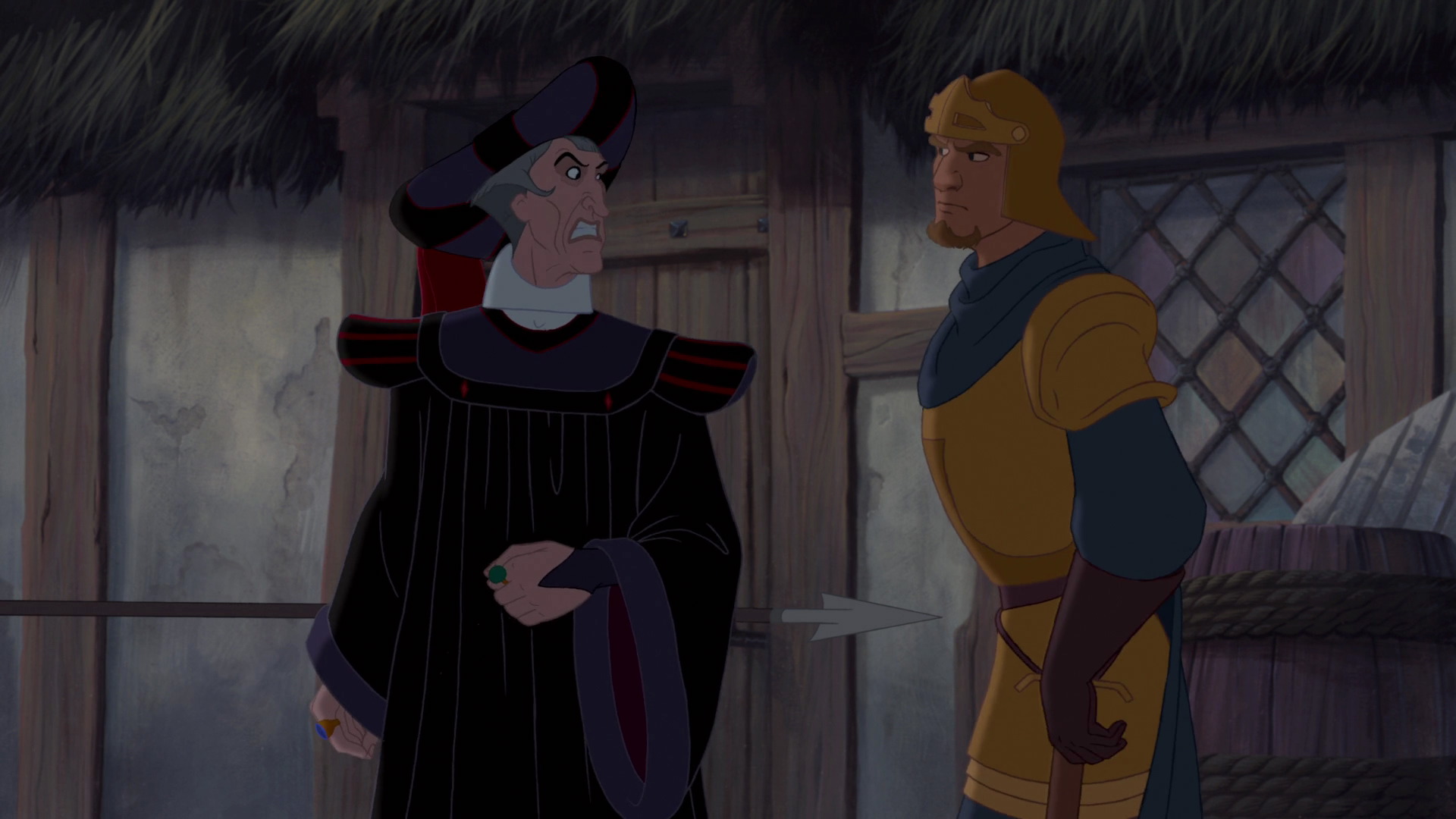
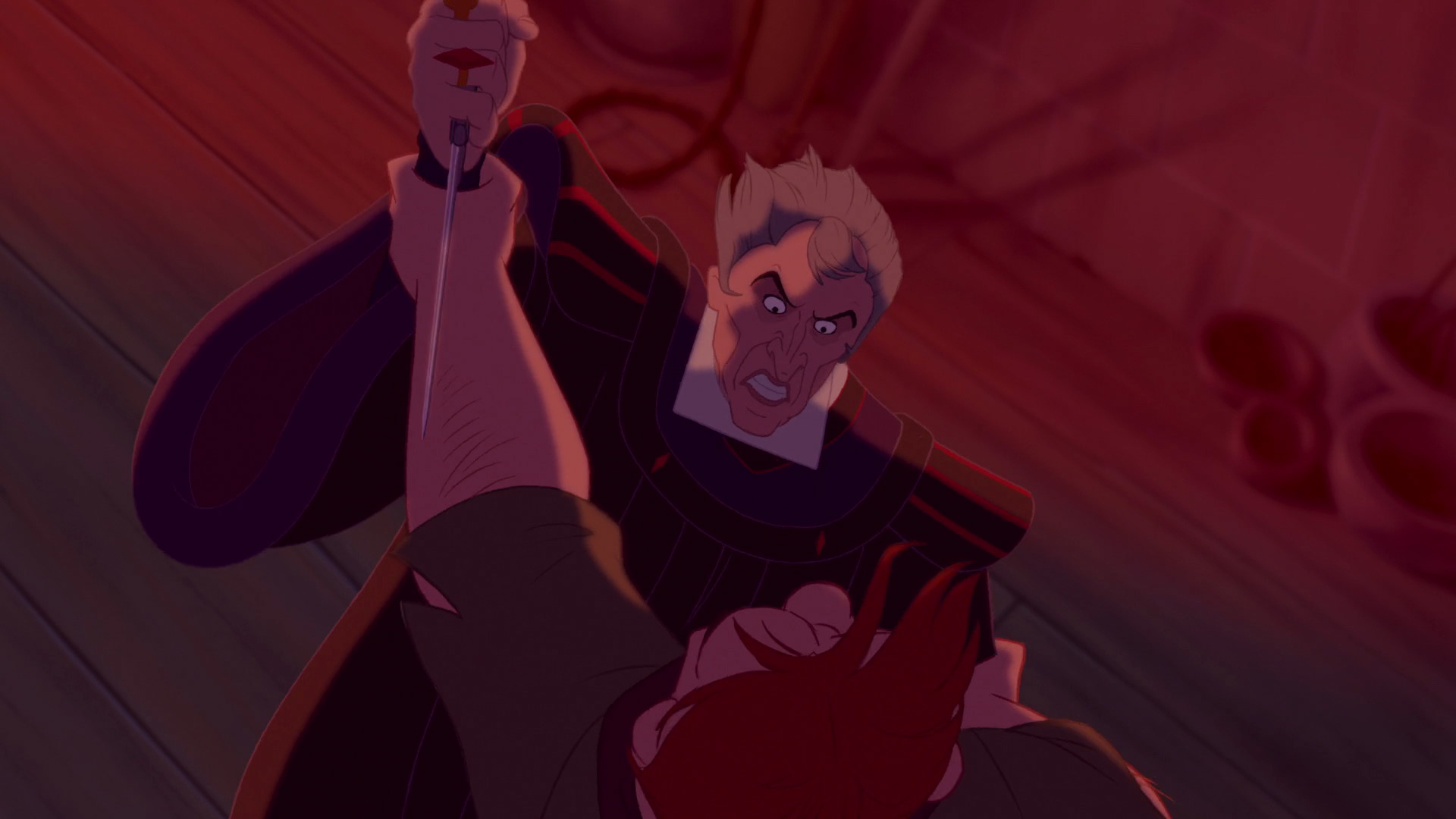
“I’m going to do what I should have done twenty years ago!”
Frollo’s obsession with Esmeralda causes him to temporarily drop his plan of discovering the gypsies’ hideout and killing them all and instead target only her. But in his search for her, he rounds up a few gypsies in the process, so it’s all good. His search tactics become increasingly cruel. In one scene, he sets fire to a house full of innocent people after interrogating them. His own fire of judgement sweeps through Paris, the very city he swore to protect.
Throughout the film, Quasimodo tolerates Frollo’s rather disagreeable personality on the grounds that Frollo raised him and cared for him for twenty years. But when he sees Frollo attempt to burn Esmeralda at the stake in the film’s climax, he takes a stand against his adoptive father. At this point, Frollo turns his back on his promise made to the Archdeacon all those years ago, and attempts to murder Quasimodo. The scene is especially disturbing, but Frollo’s death is perhaps even more so.
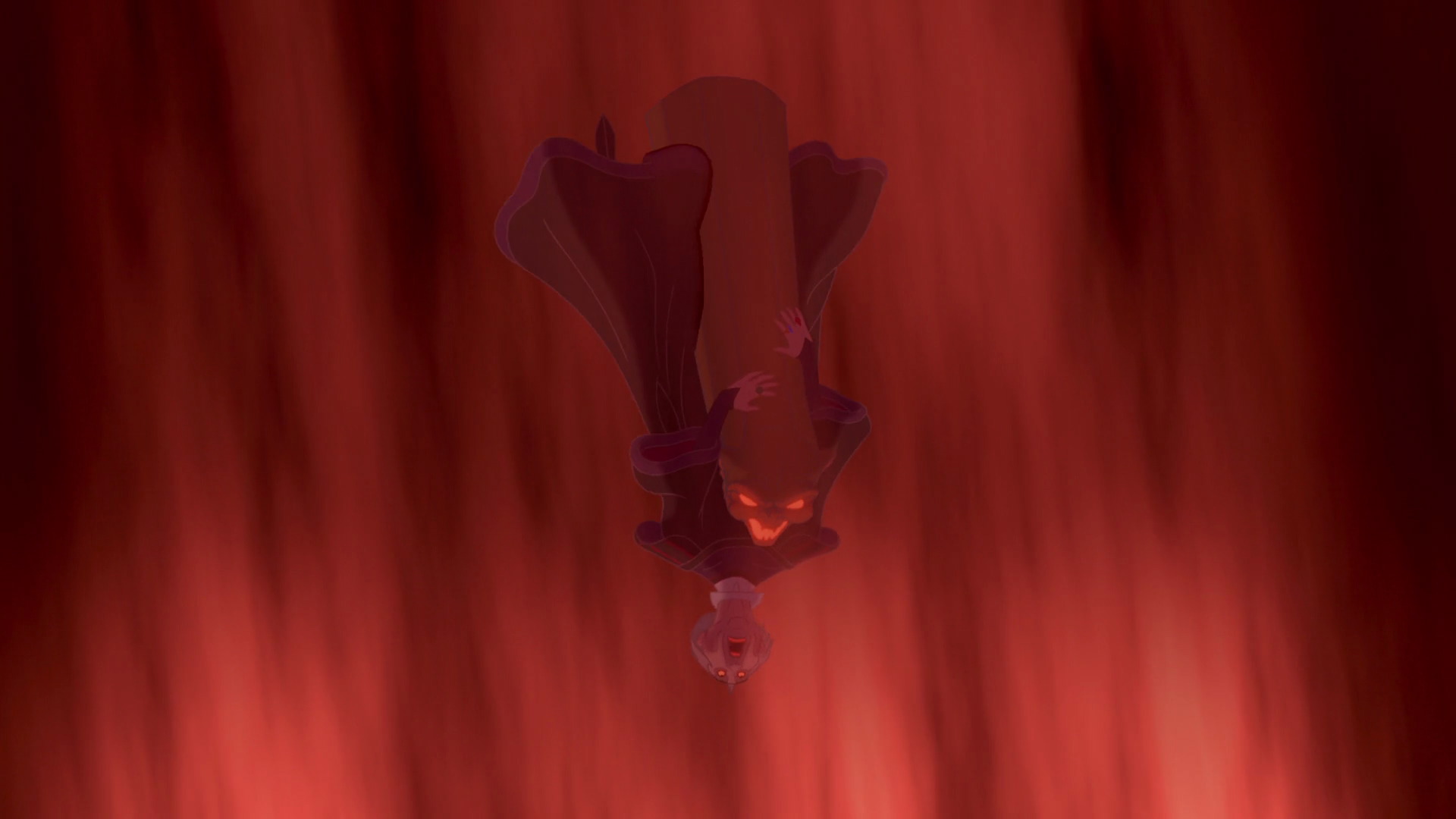
In one of those classic Disney “I’m gonna push you off this cliff!” scenes, Frollo loses the upper hand in his attempt to kill Quasimodo and winds up clinging to a gargoyle for dear life. In the only “magical” scene of the film, the gargoyle comes to life, roaring in Frollo’s horror-stricken face. The gargoyle breaks off of the cathedral, and Frollo is sent plummeting down into a sea of molten metal. The image of the gargoyle sending Frollo face-first into the fires below is almost too direct, but the irony is delicious.
Judge Claude Frollo could be considered a tragic character, but that’s giving him way too much credit. He was an especially dangerous villain because he is so intelligent, calculating, and confident in himself. Any feelings of guilt, any hint of conscience that he may have possessed were quickly snuffed out by his own twisted sense of self-righteousness. His death was more horrific than satisfying, and he will certainly not be missed.
Sheesh. I need to watch a different Disney movie to cheer me up. How about The Black Cauldron?
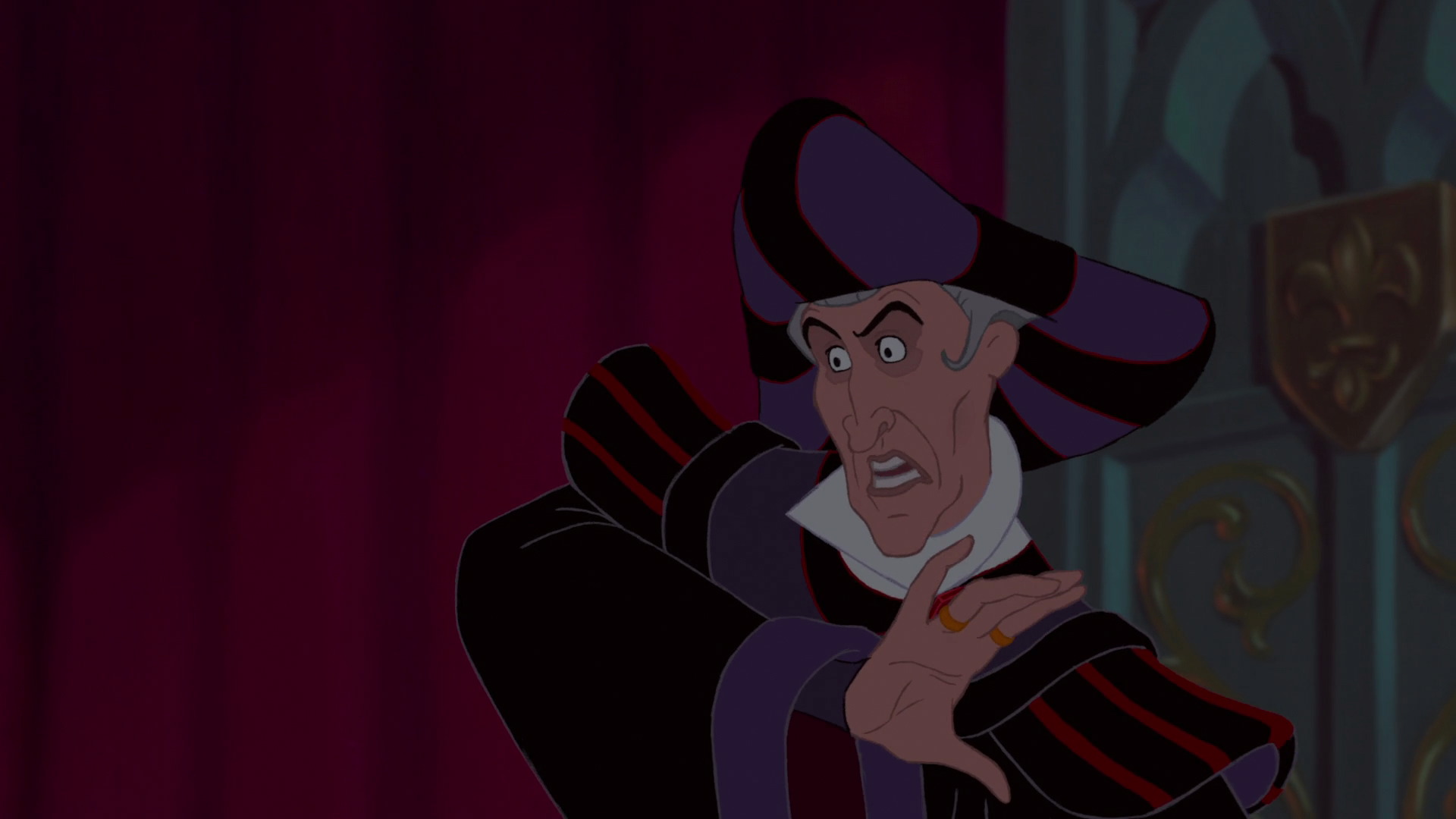
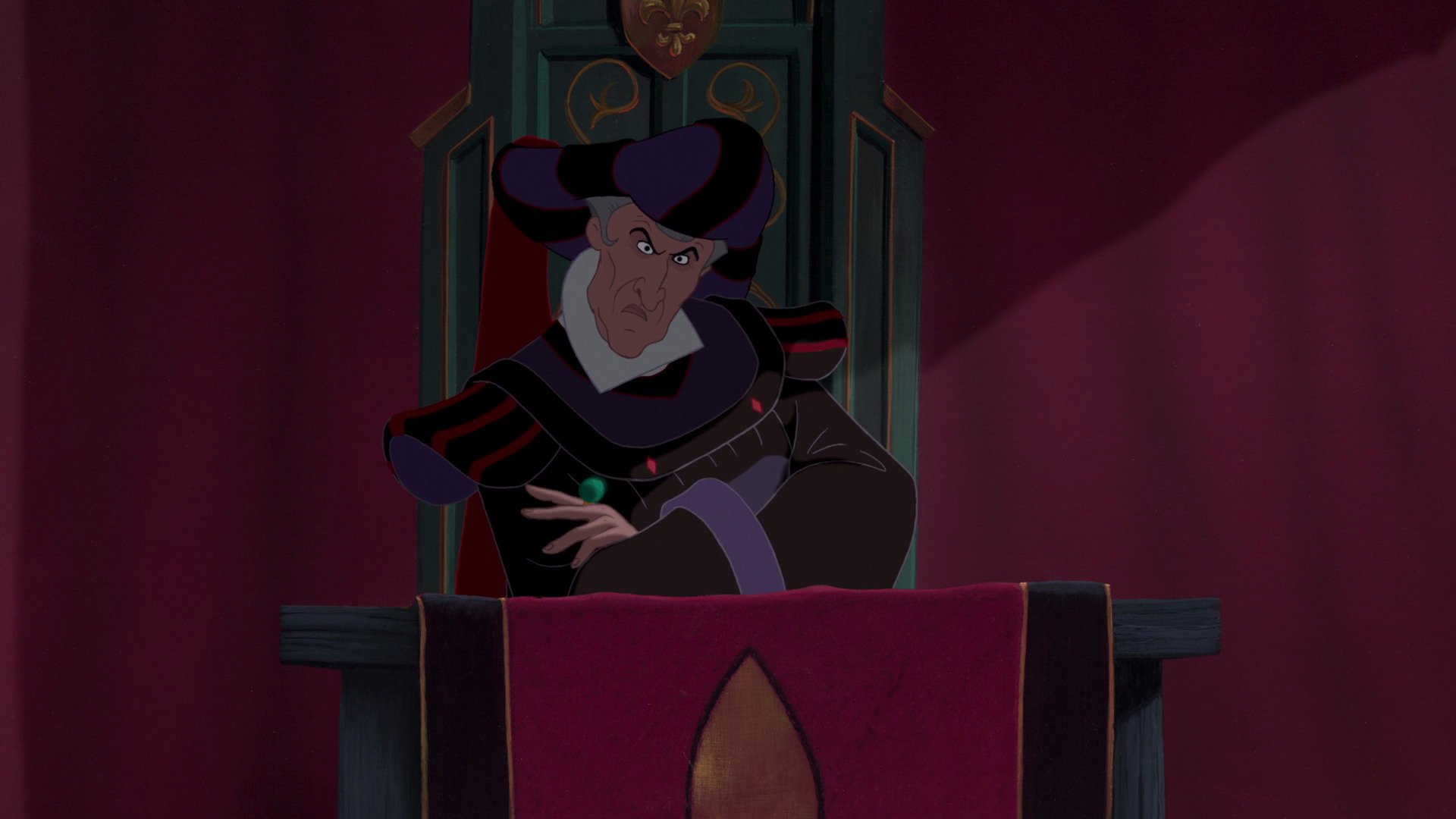
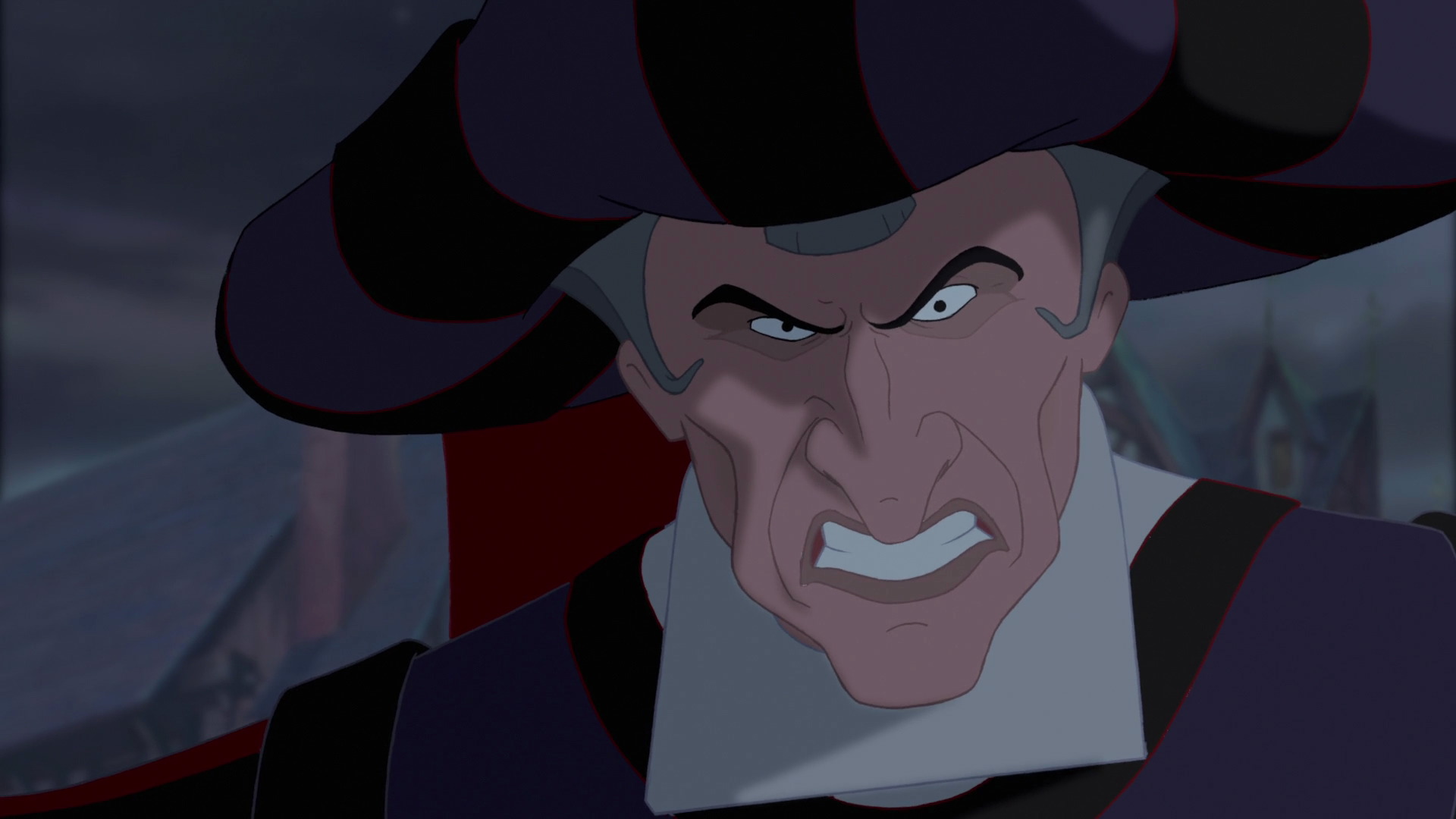
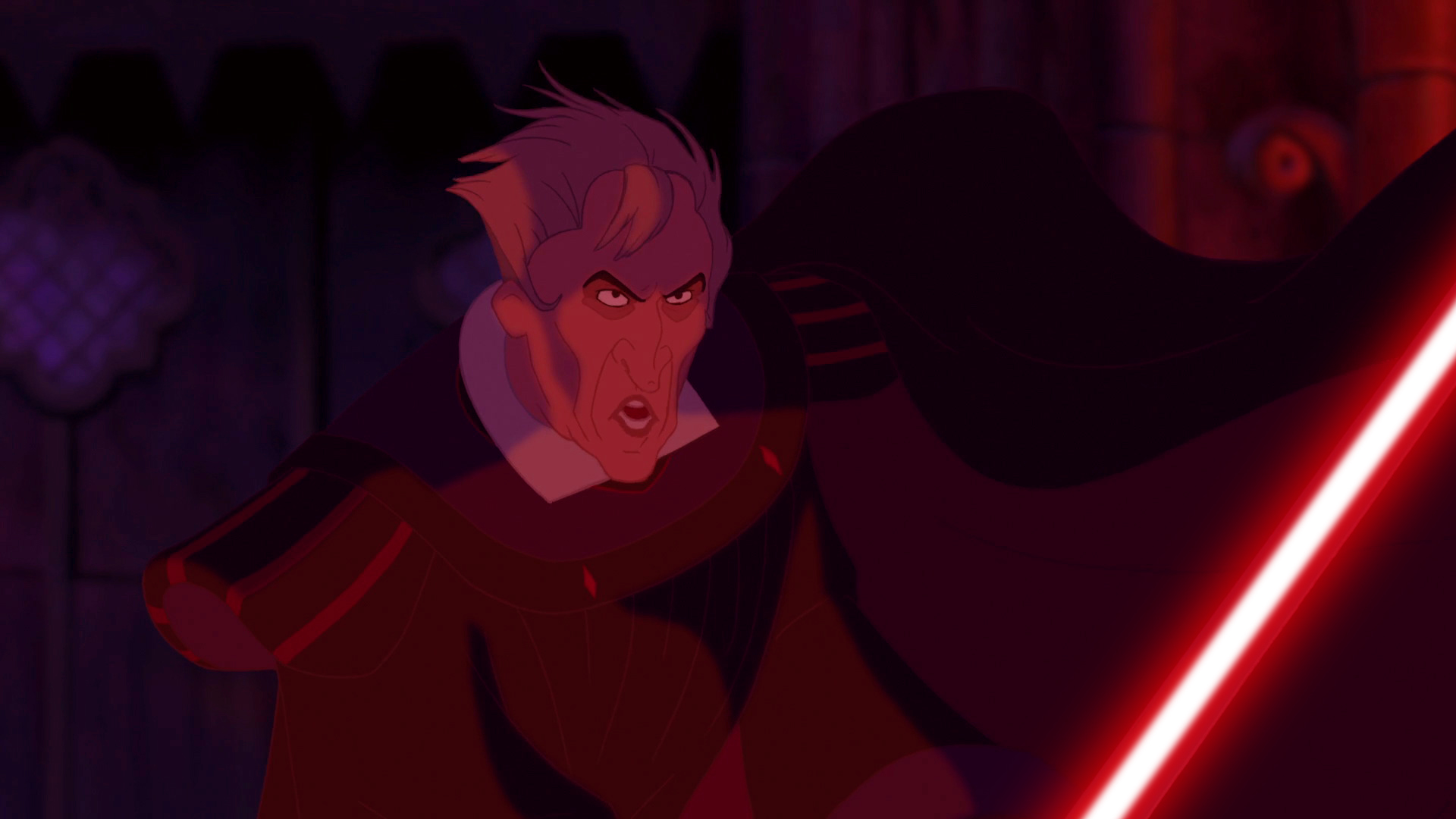
All images are from DisneyScreencaps.com. For more quote from the film, go to DisneyQuotes.com. Purchase The Hunchback of Notre Dame (1996) on Amazon.


